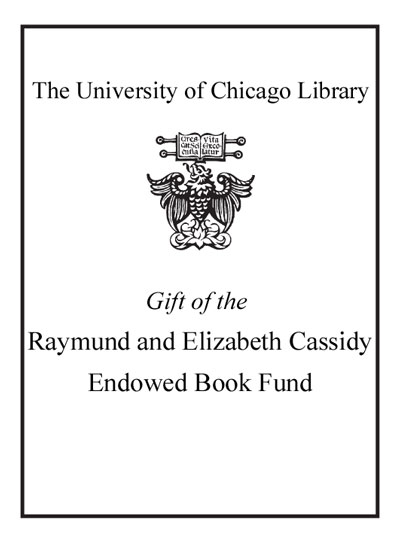Global political economy and the modern state system /
Saved in:
| Author / Creator: | Ten Brink, Tobias, author. |
|---|---|
| Uniform title: | Geopolitik. English |
| Imprint: | Leiden ; Boston : Brill, 2014. |
| Description: | xvii, 272 pages ; 25 cm. |
| Language: | English |
| Series: | Historical materialism book series, 1570-1522 ; volume 63 Historical materialism book series ; 63. |
| Subject: | |
| Format: | Print Book |
| URL for this record: | http://pi.lib.uchicago.edu/1001/cat/bib/9984218 |
Table of Contents:
- Acknowledgements
- Foreword
- Introduction
- Organisation of the book
- Part 1. Periods of Theorising Conflict in the Modern State System
- Introduction to Part One
- I. Critical-Liberal, Marxist and Neo-Weberian Approaches
- II. Power Politics and (Neo-)Realism within the Field of International Relations
- III. Deficits and Desiderata for Future Research
- 1. Neorealism and power politics
- 2. Critical approaches
- 3. Preliminary summary
- Part 2. A GPE Framework for Explaining Geopolitics
- IV. Foundations for Analysing Capitalism
- 1. Analyses of the capitalist mode of production
- 1.1. Commodity production: Mutual dependence and competition
- 1.2. Commodity, money, capital: Exploitation and accumulation brought on by competition
- 2. Structural features of capitalism
- 2.1. Critical social forms
- 2.2. Four features of capitalism
- 2.2.1. Wage labour relations - the vertical axis of capitalist social conflicts
- 2.2.2. Relations of competition - the horizontal axis of capitalist social conflicts
- 2.2.2.1. Excursus: Negri's underestimation of competition
- 2.2.3. Money relations
- 2.2.4. The individuation of the political and the plurality of individual states
- 2.2.4.1. Structural interdependence and 'the interest of states in themselves'
- 2.2.4.2. The plurality of individual states
- V. Capitalism as a Globally Fragmented System Across Space and Time
- 1. Combined and uneven development, relations of space and time, and the 'international'
- 1.1. The need for a global analytical perspective
- 1.2. Combined and uneven development and the level of the international and the inter-societal
- 1.3. A spatial economy of contemporary capitalism
- 2. The dynamic of the global economic process of accumulation
- 2.1. The inter- and transnationalisation of individual capitals, the world market/world economy, and the tendency towards crisis
- 3. The dynamic of the international state system
- 3.1. Multi-statehood as a structural characteristic of capitalism in space and time
- 3.2. International political institutions: the 'rights of the strong' and 'second-order condensations'
- 4. Considerations on various forms of competition
- 4.1. The dynamic of precapitalist imperialisms
- 4.2. Geopolitical and economic competition
- 4.3. Market competition, arms races and forms of geopolitical-military conflicts
- 4.3.1. The role of the arms economy and the 'military-industrial complex'
- VI. Historical Phases of the World Order and the Periodisation of Socio-Economic and Geopolitical Power Relations
- 1. Structural features, phases and constellations
- 1.1. Excursus: On the relationship between structure and agency
- 2. Hegemonic and non-hegemonic phases of world order
- 3. Phases of socio-economic development
- 3.1. The rhythms of accumulation in the global economy
- 3.1.1. Dominant and late-developing economies
- 3.2. The inter- and transnationalisation of trade, investments, and production
- 3.2.1. The internationalisation and macro-regionalisation of commodity trade and commodity sales
- 3.2.2. The inter- and transnationalisation of investments and production
- 3.2.3. On the inter- and transnationalisation of corporations
- 3.2.3.1. Interim conclusion
- 3.2.4. Transnationalisation of classes?
- 3.2.5. Using the EU as an example of macro-regional integration of power elites
- 3.2.5.1. 'Internal bourgeoisies'?
- 3.3. Periodising money and currency relations
- 3.3.1. The contemporary, non-hegemonic currency system
- 4. Phases of statehood
- 4.1. The politicisation of the economic, the economisation of the political: The ever-changing relations between the political and economic
- 4.1.1. Contemporary market-liberal statism
- 4.2. Phases of hard and soft geopolitics
- 4.2.1. Excursus: The economic effects of the geopolitical arms race during the Cold War
- 4.3. The structure of capitalist state competition and the Soviet Union
- 4.3.1. The pressures of capital accumulation in the Eastern bloc
- 4.3.2. Soviet geopolitics
- 4.3.3. The East-West conflict: Consequences for theory building, consequences for US politics
- Part 3. Market-Liberal Statism: Contemporary Geopolitical Phenomena
- Introduction to Part Three
- VII. The Balance between Soft and Hard Geopolitics
- 1. 'Democratic wars'
- 2. Excursus: International law within fragmented capitalism
- VIII. Geopolitical and Economic Competitive Relations
- 1. The aspirations and realities of US empire
- 2. The EU and the US: A conflict-laden partnership
- 3. China and the US: A new cold war?
- 3.1. State-permeated capitalist development
- 3.2. The integration of Chinese capitalism into a fragile world system
- 3.2.1. Currency disputes
- 3.3. China, international political institutions, and East Asian regionalisation
- Summary
- References
- Index

